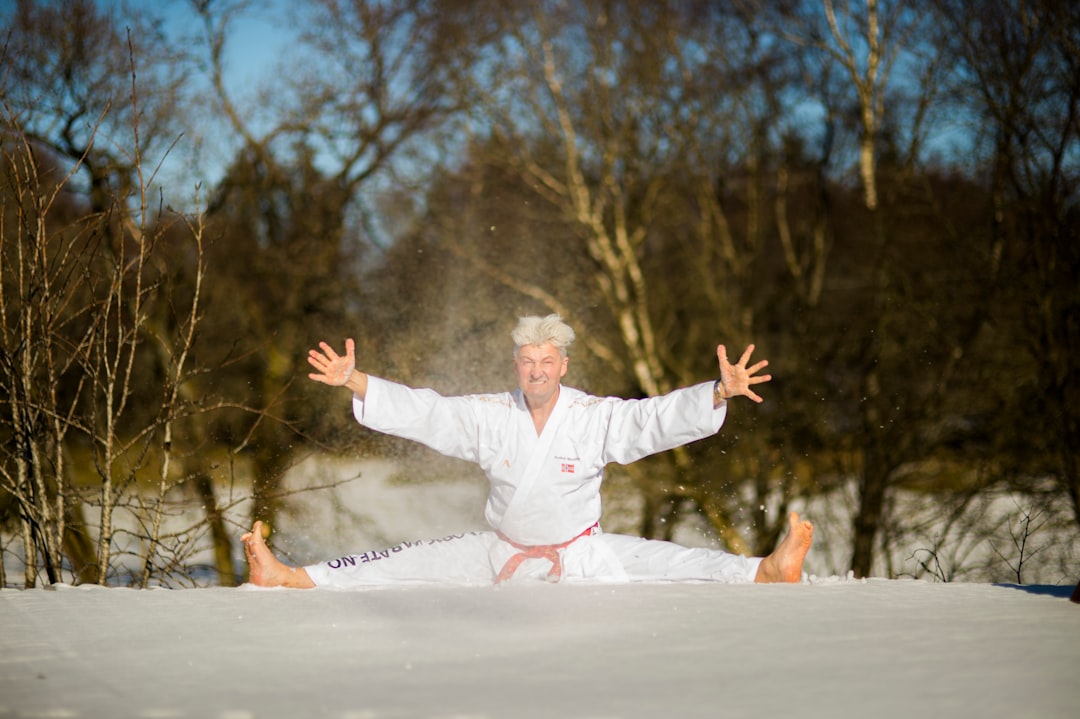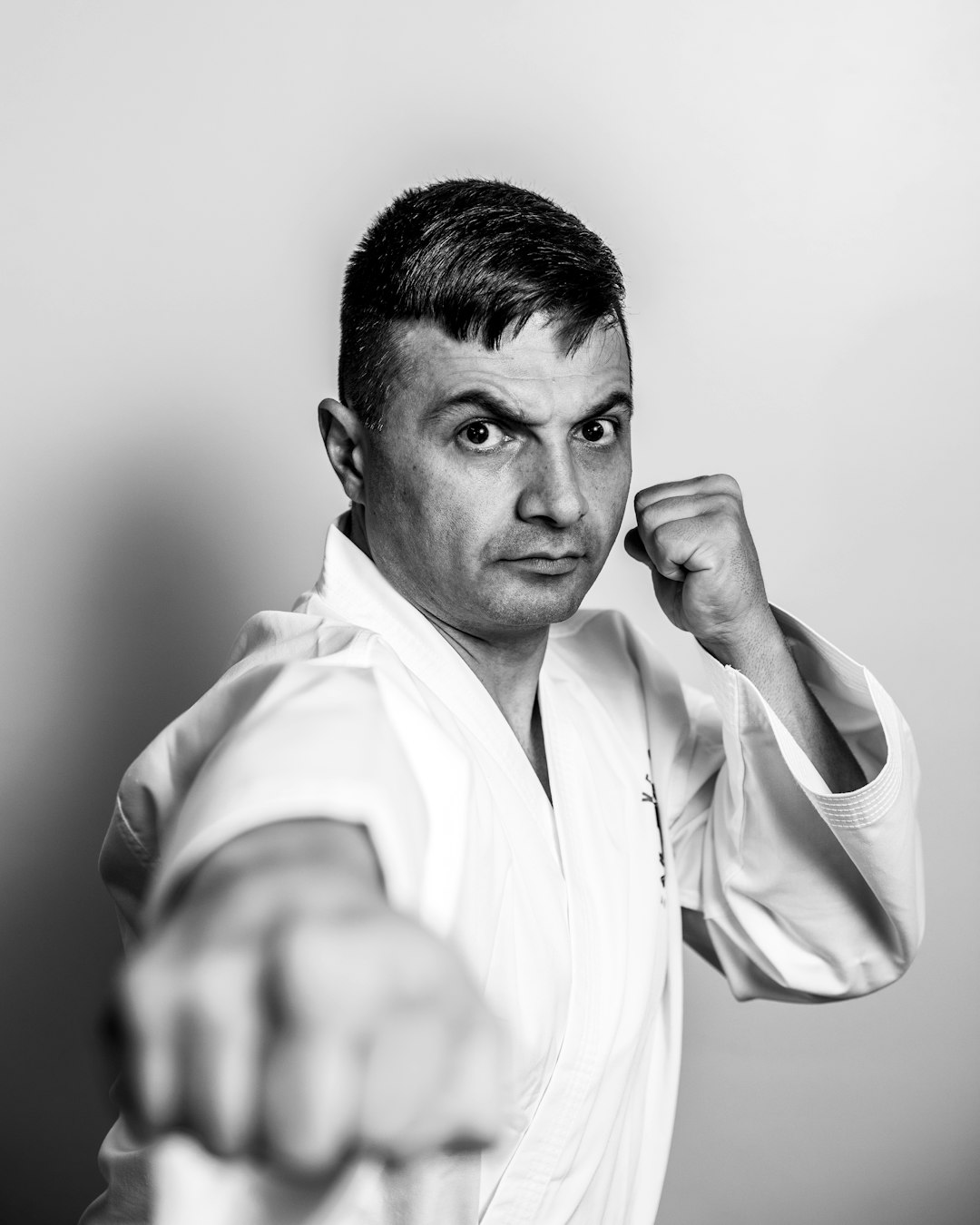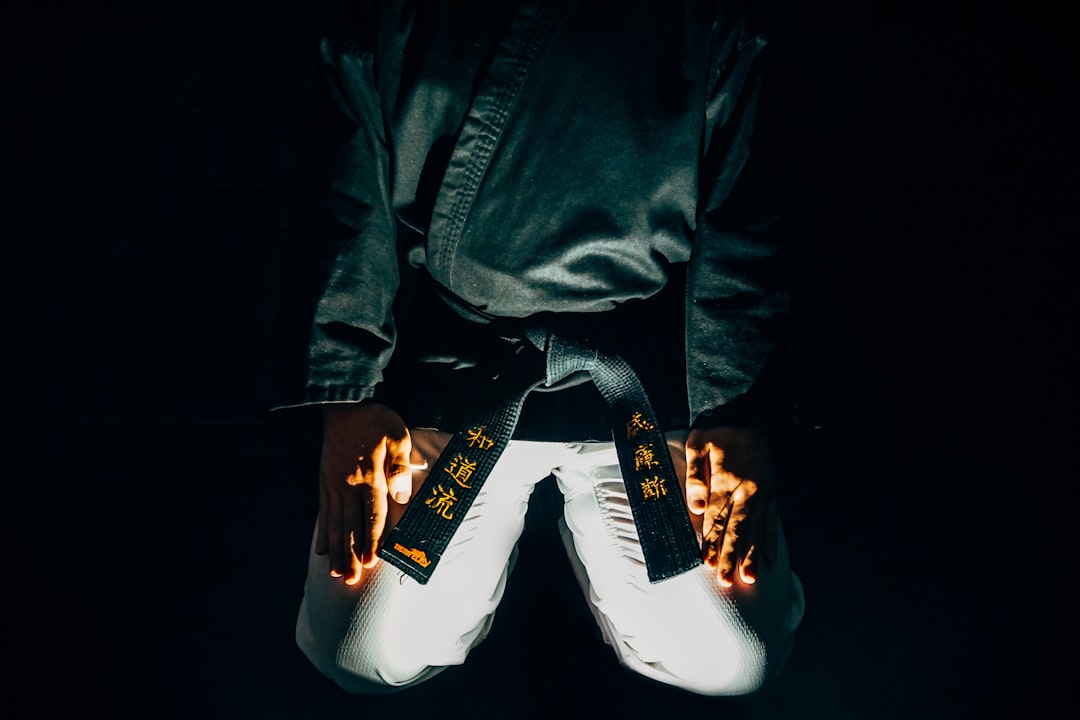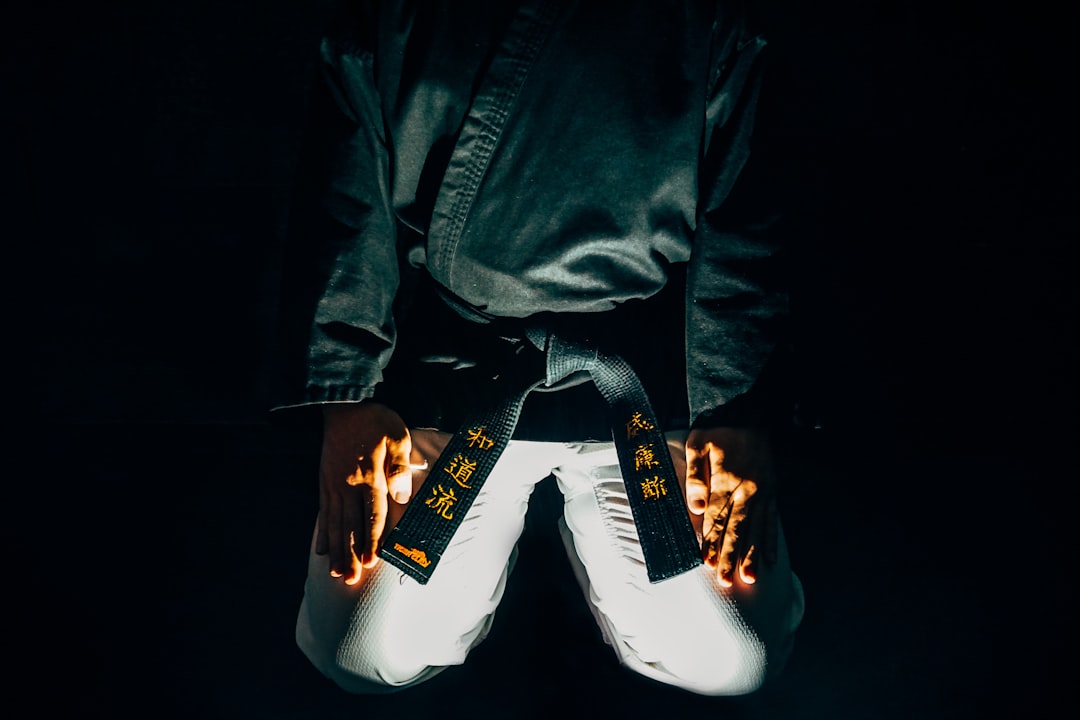When engaging in karate training, it's crucial to wear appropriate gear that balances performance with safety. The traditional karate outfit, or gi, should be white or blue and made from breathable cotton or hemp for optimal movement. It should fit comfortably, neither too tight nor too loose, and choices should consider the climate. For sparring, protective gear is essential, including headgear, forearm protectors, shin guards, groin protection, and a mouthguard to prevent injuries. As karateka advance, they may opt for heavier gis for structure and durability or lighter ones for flexibility and comfort. The gi, as the karate outfit name indicates, is central to respecting the discipline and ensuring safety. Beyond the basics, practitioners can incorporate additional protective gear like body and head protection for more advanced training, always with an eye on enhancing safety while honoring the rich tradition of karate. Whether you're a beginner or an expert, the right attire and equipment are key to effective practice and respecting the art of karate.
Embark on a dynamic journey into the world of karate, where discipline meets precision. This article serves as your comprehensive guide to the essential equipment required for authentic karate training. From the foundational ki-hakama to protective gear and training tools, we’ll explore a range of karate outfits and accessories that cater to both beginners and experts alike. Dive into “The Definitive List of Karate Equipment for Beginners and Experts Alike” and “Essential Karate Gear: A Guide to the Perfect Training Setup,” to ensure you’re equipped with the best for your martial arts practice. Master the traditional elements of karate attire and modern training essentials within “Mastering the Basics: A Look at Ki-Hakama and Other Traditional Karate Outfits.” Your path to mastery begins here, with the right gear for the art of karate.
- Essential Karate Gear: A Guide to the Perfect Training Setup
- The Definitive List of Karate Equipment for Beginners and Experts Alike
- Mastering the Basics: A Look at Ki-Hakama and Other Traditional Karate Outfits
Essential Karate Gear: A Guide to the Perfect Training Setup

When preparing for a karate training session, selecting the right gear is crucial to optimize your performance and safety. A fundamental piece of equipment for any karateka is the proper karate outfit, often referred to as a gi. The gi not only allows practitioners to move with ease but also signifies respect for the discipline. Typically, a traditional karate gi should be white or blue and made from cotton or hemp for durability and breathability. It’s designed to fit comfortably without being too tight or too loose, enabling full range of motion during techniques like kicks, punches, and blocks. Is a heavyweight or lightweight gi better for karate training? The answer largely depends on the climate and personal preference. A heavier gi provides more structure and durability, suitable for colder environments, while a lighter gi offers greater flexibility and comfort, ideal for warmer conditions.
Beyond the gi, essential karate gear includes protective equipment for sparring sessions. Padding is essential to protect vital areas such as the head, forearms, shins, and groin. A well-fitted headgear not only safeguards your head from impacts but also prevents cuts and bruises. Forearm protectors are designed to absorb the impact of strikes, while shin guards protect the lower legs from kicks. Groin protection is equally important for men and women alike to avoid injuries during impact. Are these protective items mandatory in all karate styles? While some traditional schools may not require them during practice, it’s highly recommended to use protective gear when sparring or practicing with a partner to ensure safety and prevent potential injuries. Additionally, a mouthguard is advisable to protect your teeth, which are often overlooked but can be easily damaged. Ensuring you have the right karate gear not only enhances your training experience but also ensures that you remain safe while honing your martial arts skills.
The Definitive List of Karate Equipment for Beginners and Experts Alike

Whether you’re a beginner or an expert, having the right karate outfit, known as a gi, is essential for practicing this martial art. A traditional white cotton gi with a belt, or obi, is commonly used in classes and competitions. For beginners, it’s important to choose a gi that is comfortable and fits properly, allowing for ease of movement during practice. As you progress, you may opt for a heavier weave or a different color, often signifying your rank within the discipline. Experts might prefer a gi tailored to their specific needs, which could include features like reinforced knees or a design that minimizes restriction in movements.
In addition to the gi, essential karate equipment includes protective gear for sparring. Padding is crucial for safety during contact exercises and sparring sessions. This typically includes hand protectors, shin guards, and foot pads. For beginners, it’s advisable to start with basic protection before advancing to more specialized gear as they develop their skills. Expert practitioners might require additional protective equipment such as body protectors or headgear depending on the style of karate they are practicing. It’s also important to have a firm surface for practice, like a tatami mat or a padded floor, which can absorb impact and reduce the risk of injury.
Mastering the Basics: A Look at Ki-Hakama and Other Traditional Karate Outfits

When practicing karate, donning the appropriate outfit is crucial to ensure proper technique and comfort during training. A traditional karate outfit, often referred to as a “karate gi,” is a white cotton uniform that allows for ease of movement while providing durability. The gi typically consists of a jacket, trousers, and a belt, known as an obi, which indicates the wearer’s rank. For those looking to master the basics or delve deeper into traditional karate practices, understanding the significance of the “Ki-Hakama” is essential. The Ki-Hakama is a divided skirt that was once commonly used in Okinawan martial arts and serves as a symbol of respect and discipline within the dojo. While it may not be worn by all practitioners today, its historical importance in karate training cannot be overstated. Are questions such as “What role does the Ki-Hakama play in traditional karate?” or “How does the traditional karate outfit contribute to the practice?” worth asking? Yes, the Ki-Hakama was a traditional part of Okinawan martial arts attire and symbolized the wearer’s dedication to the art. It also provided additional mobility for certain techniques. The traditional karate gi, on the other hand, is designed to facilitate both the learning and execution of karate movements, offering a balance between flexibility and modesty required in the dojo setting.
Karate practitioners, both beginners and experts, will find that a well-equipped training space is key to their martial arts journey. This comprehensive guide has outlined the essential karate gear required for effective practice, emphasizing the importance of not only protective equipment but also traditional garments like the Gi and, more specifically, the Gi-hakama, which offer both functionality and respect for the discipline’s roots. By incorporating these elements into your training regimen, you can ensure a well-rounded approach to mastering this ancient art. Remember to select gear that not only meets your needs but also aligns with the traditions and principles of karate, ensuring a respectful and beneficial practice environment. With the right equipment in place, you’re ready to advance your skills and embrace the many benefits karate offers.
